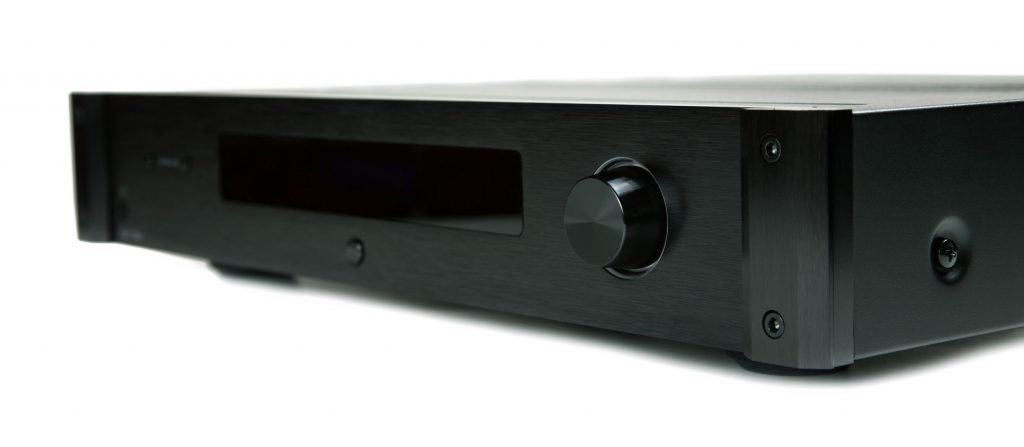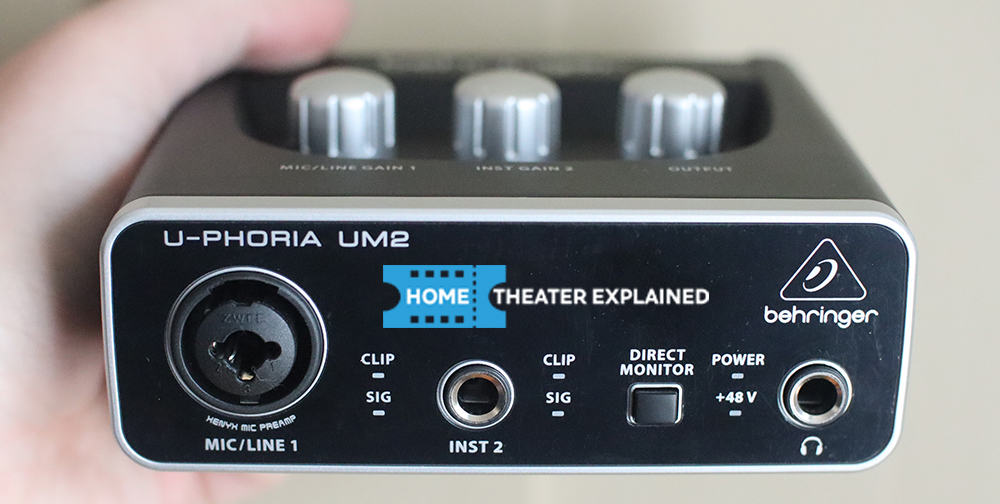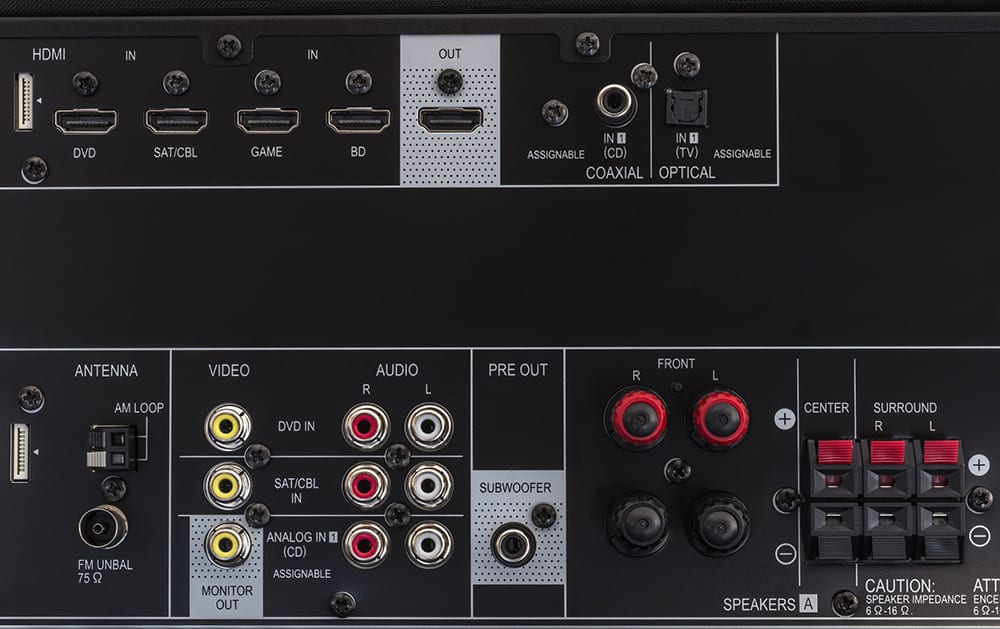Recreating the magic of the big screen at home is more than just a comfy chair and a big screen. Sound means everything. Dynamic, accurate sound can take your home movie theater setup to another level.
This is achieved by using a amp, otherwise known as a Power Amplifier.
Electronic amplifiers are designed to increase the magnitude of power from an input signal.
They coordinate all media including games consoles, microphones, Blue-Ray and DVD players via a cable box to a television and sound system to deliver consistently superior audio quality.
An amp boosts a line-level signal and sends it to the speakers.

You might expect that a good amplifier is enough to guarantee excellent audio levels. It should be, but sometimes equipment has a weak signal output and needs a boost before it reaches the amp.
This is the job of a preamplifier.
It has one rudimentary task to perform; to increase gain, taking a weak signal, and boost it to a line-level signal (the standard audio signal strength used for interconnecting different pieces of audio equipment).
They are used to connect multiple audio or audio/video (AV) devices such as DVD, CD, and Blue Ray players, to 1 audio output signal, controlled by an amp. In the process, improving their signal quality.
This saves having to disconnect sources when switching from one to another.
It isn't a preamps job to improve the quality of sound, however, when paired with an amplifier it will escalate good sound to great sound.
A preamplifier improves a weak signal to line level output before it reaches the amplifier.
An amplifier boosts this line-level signal before sending it to the speaker system.
There are units available with combined amps and preamps. However, audio purists will note that better results are achieved with separate devices.
Amps are noisy, require higher amounts of power, and tend to generate heat.
Conversely, preamps are quiet and energy-efficient.
Using an amplifier without a preamp might result in poor quality, inconsistent audio from low signal strength.

An audio interface is another term regularly encountered when researching how to improve sound.
Simply put, it is an external sound card for use with desktop computers, laptops, and tablets. Although to produce and record sound, each of these devices already has a sound card, an audio interface is required to greatly improve the quality of sound recordings ready to mix and master.
High specification interfaces have integrated preamps, ruling out the need for both.
USB microphones already contain an audio interface but might have weak signal output. In this case, you would need a preamp instead.
As the preamplifier is there to boost the weak signal, it should go near the start of the chain.
For example:
The device with the poor output in this instance would be a microphone.
Connect that directly into the preamp via the marked 'mic input' port.
Once connected, numerous other devices can follow, including a mixer, interface, or receiver with no integrated preamp. The amplifier is the last link in the chain before the speakers.

There are three considerations when choosing the size of the amp:
Amplifiers are rated by a ratio, the most common being 2.1, 5.1, and 6.1.
The first number specifies the number of channels in the chain, simply put, how many speakers the amp will connect to.
The second number denotes the number of subwoofers in the chain.
Let's use the 5.1 amp as an example.
The system works best in a small room with 5 speakers placed equidistant at the sides and front of the room. One subwoofer should be added to highlight the rich, bass-filled tones.
The 6:1 amplifier suits a small to medium-sized room in much the same system as above, but with an added centralized speaker at the rear of the room.
A 7:1 amp works best in larger rooms in the same setup, 5 speakers to the front and sides, but this time 2 at the rear, to the left and right of the room.
In all instances, 1 subwoofer is used in the chain.
An amplifier can improve the sound quality and clarity of a multitude of electronic devices from musical instruments, media players, and game consoles when run through a sound system or television.
Amplifiers have two main formatting sources:
Blue-Ray and DVD players mostly use Dolby sound, as does TV. If these cover the majority of your viewing preferences, then it is advised to opt for a Dolby formatted amp.
As the signal is compressed less during processing, the resulting overall audio experience is cleaner, crisper and has a wider dynamic range.
Operating Dolby formatted devices through a DTS system might result in distortion.
Any sound quality improvement would be negated.
When purchasing new equipment, including amplifiers, models that are DTS compatible are recommended.
Building a home theater audio system with a preamp and amp sound system can be daunting for the uninitiated, but comes with a huge reward.
The system can be tailored 100% to the user's desired results, providing full control at every point.
However, it comes at a price, as you will need at least 4 individual pieces of equipment. A speaker system, subwoofers, amplifier, and preamplifier.
A/V receivers are an all in one unit that combines everything, audio processing, amplification, and video switching.
This can be a more affordable option and are an easier system to install – plug and play.
Modern receivers are a vast improvement on their predecessors. They now come with multiple terminals to connect various devices. They accept RCA, HDMI, and in some cases, USB devices, with the ability to connect wirelessly and through Bluetooth.
With that said, if you're interested in the best possible sound that you can achieve. In our opinion, that comes with a system of separate preamps and amps.
Not only will you get richer sound, a preamp also ensures you have more available channels. This makes them ideal for large spaces.
Even if you only run 5-speakers, to begin with, once the system is up and running, the preamp allows the user to expand to 7, 8, or 11 channels.
A preamp serves to prepare any weak signal before it reaches the amplifier. Once there, the amplifier will boost the signal, resulting in rich, dynamic sound.
A decent amp system gives the user full control over their personalized home studio or movie theater.
